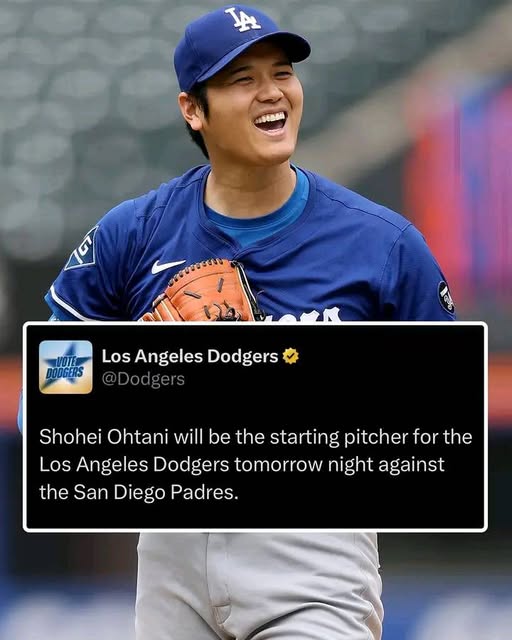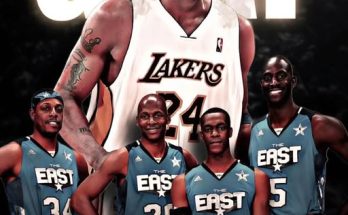It was a night of electric energy at Dodger Stadium, like the city of Los Angeles had collectively held its breath for nearly two years. Under the bright lights on a warm Monday evening, Shohei Ohtani — the Japanese two-way superstar and National League MVP — took an unassuming jog from the dugout to the mound, delivering baseball’s most anticipated moment of 2025: his comeback as a pitcher. The scene was equal parts triumphant and emotional — a moment that seemed impossible just a season ago.
Ohtani’s last professional pitching appearance came on August 23, 2023, for the Los Angeles Angels, before undergoing his second Tommy John surgery in September of that year (. Since then, his right elbow had been restored, and his left shoulder — injured during the 2023 World Series — had also been rehabilitated. Throughout the 2024 season, he remained a force at the plate but refrained entirely from pitching, transitioning to a full-time designated hitter for the Dodgers .
The Dodgers, riding high after their World Series win, were eager to forge a true “two-way” version of Ohtani. He spent the early months of 2025 in a meticulously paced ramp-up program: bullpen sessions, flat-ground throws, simulated games, incremental progressions . Manager Dave Roberts repeatedly emphasized the importance of patience — safeguarding Ohtani’s arm for the long haul rather than rushing his return Reports in February signaled that his progression was steady but cautious, and many anticipated a May or June debut, once he could face live hitters and the rotation could comfortably absorb his starts
The buildup culminated on June 16, 2025. Despite the historic reputation, Ohtani’s first outing back was characteristically pragmatic: a single inning of relief work against the San Diego Padres. He warmed up behind the mound with fastballs nudging triple digits — even touching 100 mph on his heater . In that brief one-inning appearance, he allowed one run on two hits over 28 pitches
Fans were electrified. Television viewership surged to a record high across MLB.TV, even surpassing previous benchmarks by around 28% His return as a pitcher wasn’t just a game moment — it became a cultural event for baseball fans around the world.
Offensively, Ohtani had already been on fire that season. By mid-June, he was batting an eye-popping .297/.393/.642 slash line with 25 home runs (. On June 15, one day before his mound return, he blasted two home runs against the San Francisco Giants: one of those being his 250th career home run . Just days earlier, he launched 15 home runs in May, tying the Dodgers single-month record, and earned NL Player of the Month honors after batting .309/.398/.782 with 15 homers (
From the perspectives of his teammates and opponents, the dual threat was transformative. The Dodgers rotation had been battered by injuries — Tyler Glasnow, Blake Snell, and Roki Sasaki were all sidelined at various times (— and Ohtani’s return provided much-needed flexibility. As a pitcher/DH, he occupied only one roster spot, enabling the team to optimize both their lineup and rotation–The night of June 23, 2025, against the Nationals, marked Ohtani’s second outing on the mound. After his first inning back three starts prior, manager Roberts gradually stepped him back in. This time, Ohtani started off strong: a scoreless first inning before turning in an MVP-worthy performance at the plate. He smashed a three-run triple in the seventh and followed it up with a two-run homer in the eighth . The game ended in a 13–7 Dodgers victory, a show of his two‑way dominance that few modern players could match
Teammates and broadcasters marveled. Ohtani was no longer just “back” — he was back, in full force, showcasing his thunderous arm and explosive bat in the same night. It was an intoxicating glimpse of what this season could still hold.
Reflecting on the journey, one must marvel at the meticulous orchestration behind the scenes. After his September 2023 surgery, Ohtani’s offseason included distraction-free rehab and recovery. He threw bullpens in February . By early April, he was working on mound activity approximately twice weekly with splitters and fastballs . Roberts reinforced that each progression was deliberate — no fast-tracking, no risky leaps .
The Dodgers structured their plan around durability, not just drama. They envisioned a six-man rotation model enabling Ohtani to pitch roughly once a week, staying fresh in both roles Social media buzz captured fans’ awe and hope. One social post elegantly phrased the sentiment: “When Ohtani’s in a good spot, we’re all in a good spot.” Another warned, “We know people are excited for Shohei the pitcher to come back but we cannot rush him.
By June, it was clear this strategy had paid off. Ohtani not only had returned but was performing at a high level. His fastball velocity, once a question mark, soared — triple digits, live . While he allowed a single run in that first inning back, his command, velocity, and presence hinted at greater things yet to come .
Following the second outing, manager Roberts remained cautious yet optimistic — tweaking pitch counts and inning durations while gauging Ohtani’s long-term stamina . The duality of his role necessitates a finely tuned balance. Roberts stated after the first outing that they weren’t sure when the next one would be or how much he would extend — reinforcing how closely they are monitoring his health .
Across Dodger Stadium, fans chanted his name with the fervor of worship. On social media and television, analysts praised the way Ohtani defied baseball norms — a full-hitter and pitcher, embodying the most extreme form of athletic versatility. The spike in MLB.TV viewership underscores how much he matters — not just to the Dodgers, but to the sport as a whole
In the larger arc of Ohtani’s legacy, this comeback might define him as much as his 50/50 season or historic MVP awards. He is the first player in MLB history to hit 50 homers and steal 50 bases, and the first designated hitter ever to win the MVP in the National League . Now, he is carving out a dual legacy: blending elite offense with top-tier pitching in a single season.
In Tokyo, where he starred in the MLB Opening Série in March, he delivered a double — his first action on Japanese soil since signing with the Dodgers ( Those moments were promising, but Monday’s pitching and batting exhibition brought the promise to life.
What comes next? If health holds, expect Ohtani to make weekly pitching appearances, steadily building up to full-starter workloads. On the offensive side, he’ll continue to anchor the lineup — investing intentional rest days while balancing pitcher duties . The Dodgers, with multiple starting pitchers sidelined, need every ounce of his contributions. His presence gives them a strategic edge — dual-threat availability, deeper roster flexibility, and psychological firepower.
Young fans, long resigned to specialization in modern baseball, watched in awe. Veterans like Clayton Kershaw and Tony Gonsolin, rehabbing alongside him, suddenly had the chance to witness a peer perform two elite roles simultaneously. The sport itself earned a fresh narrative: maybe baseball wasn’t done evolving. Maybe there was still room for revolution.
The night’s victory — 13–7 over Washington — gave a snapshot of Ohtani’s impact. His 1st-inning scoreless pitch calmed the rotation; his 3-run triple in the 7th energized the stadium; his 2-run homer in the 8th sealed the game ( The Dodgers are climbing in the NL West — they already sat at 43–29 by mid-June and with Ohtani pitching again, the ceiling feels limitless.
Yet, amid the spectacle lies a caution. Ohtani has endured two major elbow surgeries and a torn labrum. Each return raises the question: can he sustain this? His own words — “Given my age, my next injury could be the last chance” — echo a haunting note of realism . Still, his resolve remains ironclad. If all goes well, we’ll see him pitch through October, and maybe beyond.
Looking ahead, Ohtani’s return has rewritten the baseball narrative. It resurrected the two-way player in a modern era of specialization. It ignited a fanbase and sports network viewership to record levels. It offered the Dodgers a supercharged weapon that stretches both their lineup and rotation. And — most importantly — it reminded the world of his outlier talent, his relentless artistry as both hitter and hurler.
This season, there is still much baseball left to play. But for Shohei Ohtani, the past two weeks have already rewritten history. With every fastball and home run, he’s redefining what one player can achieve. The mound is back beneath his feet. The bat is still in his hands. And the rest of Major League Baseball may be powerless to stop him.


